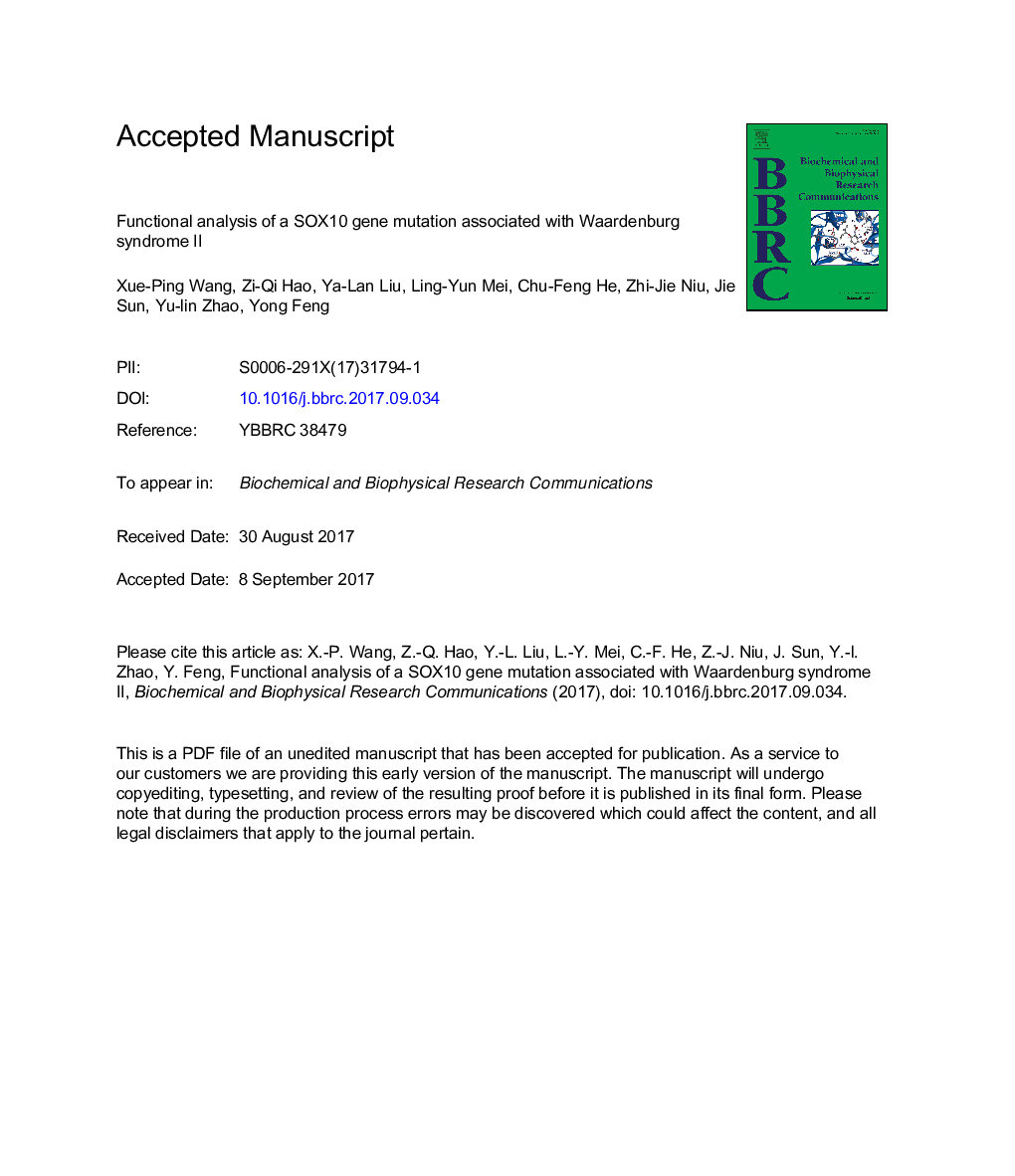| Article ID | Journal | Published Year | Pages | File Type |
|---|---|---|---|---|
| 5504635 | Biochemical and Biophysical Research Communications | 2017 | 22 Pages |
Abstract
Waardenburg syndrome (WS) is an autosomal dominant inherited non-syndromic type of hereditary hearing loss characterized by varying combinations of sensorineural hearing loss and abnormal pigmentation of the hair, skin, and inner ear. WS is classified into four subtypes (WS1-WS4) based on additional symptoms. WS2 is characterized by the absence of additional symptoms. Recently, we identified a SOX10 missense mutation c.422TÂ >Â C (p.L141P) associated with WS2. We performed functional assays and found the mutant loses DNA-binding capacity, shows aberrant cytoplasmic and nuclear localization, and fails to interact with PAX3. Therefore, the mutant cannot transactivate the MITF promoter effectively, inhibiting melanin synthesis and leading to WS2. Our study confirmed haploinsufficiency as the underlying pathogenesis for WS2.
Related Topics
Life Sciences
Biochemistry, Genetics and Molecular Biology
Biochemistry
Authors
Xue-Ping Wang, Zi-Qi Hao, Ya-Lan Liu, Ling-Yun Mei, Chu-Feng He, Zhi-Jie Niu, Jie Sun, Yu-lin Zhao, Yong Feng,
